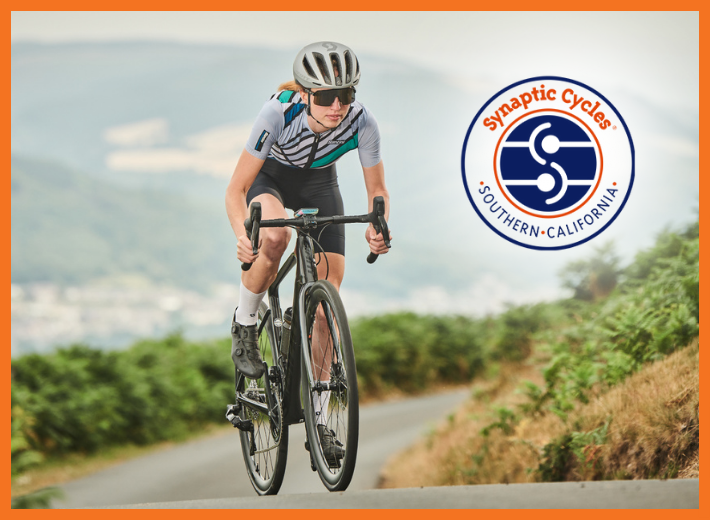Cycling is multi-dimensional and taps into different energy systems as duration and effort change, so a well-rounded cyclist is able to combine good sprint power, an ability to dig deep for multiple hard hill climb and be able to survive a long ride of multiple hours. This is all thanks to having a strong aerobic and anaerobic base.
The former is generally used for long-distance cardio activities and sees the body maximize the amount of oxygen it can get to muscles by increasing breathing and heart rate. The latter is tapped into for high-intensity efforts where oxygen can’t get to the muscles quick enough; energy is sourced from the breaking down of glucose stored in the body instead.
But how do you build such a rounded profile, improve your weak areas, and continue to maximize your strengths on the bike? Alan Milway, mountain bike coach to the likes of Rachel Atherton, Martin Maes and Greg Minnaar goes through each area of fitness and how it can be improved, including a session for each that will help transform you into an unbeatable all-rounder.
1. Sprinting
A true sprint is a maximal effort that lasts for only a few seconds and aims to generate the most amount of watts possible by a combination of force through the pedals and leg speed. There is an interplay between gearing and maximum power available, as too easy a gear will lead to not enough force through the pedals, while too hard a gear will mean a lot of force but not a high enough rpm of the cranks. (A common mistake is grinding away in too hard a gear with a low rpm.)
To train this, it is important to not only find a suitable gear, but a suitable stretch of road or trail and attempt a full effort for only five to six seconds. A true sprint will challenge the phosphocreatine (PCr) energy system (the body’s way of creating short, sharp bursts of energy from the Adenosine Triphosphate molecule found in all of its cells) to supply energy at a high enough rate to meet the explosive demands. If riding on the limit, PCr stores will deplete in a matter of seconds, reducing energy supply and, with it, maximum power delivery.
In order to improve sprints, we need to fully recover this energy system before going again so the wattage is as high as possible. This ensures we aren’t just getting a leg-burning sprint, but a high horsepower attack each time!
It’s worth bearing in mind that you should aim for a break of three minutes or more between each sprint – it is all too common for rest to be insufficient between each effort, so power falls away due to fatigue and the session turns in to a sprint repeat session, which may not match outcome goals.
Sprint session:
-
15-20 minutes warm-up; ramp up the effort gradually and then have a few high-speed efforts to prepare
-
Set out a ‘track’ either between lamp posts, cones, trees or trail obstacles that equates to a sprint of approximately six seconds. Roll into it slowly, or from a standing start, and then explode for maximum effort. Rest for three minutes and repeat
-
Aim for four to eight sprints (if time increases too much after four minutes, stop as you are getting too tired.)
2. 60-second efforts
Sixty-second efforts are some of the hardest and most challenging physical challenges on a bike; they’re considered the ‘longest sprint’. They take you into an acidic, painful world where your legs slow and willpower is needed as much as physical power to make it to the end of each interval.
On a running track, the 400 metres fits into this realm, and for cyclists, the one-kilometre pursuit is the true challenge here. You not only need a high power output, but the ability to sustain this while tolerating the increasing lactate build-up that causes your legs to scream and your speed to decelerate.
Developing a tolerance and capacity to buffer rises in lactate is key here. A lot of rides won’t incorporate enough of these efforts into a session, as they go out very hard, legs scream and fatigue, and then a long recovery is required before attempting another 60-second sprint, which often isn’t representative of a race effort. In a cross-country race, for example, there may be short, hard climbs to power over and the ability to recover between each of these is key.
Sessions can be very varied and either challenge fitness to hit high power or to sustain an effort (which will depend on specific needs). The below session helps to build tolerance for high-intensity sustained efforts. It’s ideal for a stationary bike, or can be done up a gradual hill climb.
60-second effort session:
-
15-20 minutes warm-up – ramp up the effort gradually and then have a few high-speed efforts to prepare
-
Eight x 30 seconds ‘hard’ effort / 15 seconds recovery
-
Three to five minutes rest
-
Repeat the block two or three times maximum.
The 30-second efforts should be at a pace you could sustain for a little longer, but not much. People often start too hard and their legs can’t match the efforts after four reps, so bear this in mind. The aim is to build tolerance to this high-intensity effort and be able to repeat it.
3. Five-minute efforts

As effort duration extends to five minutes, there’s a higher proportion of aerobic (rather than anaerobic) contribution to energy production and this extends further as duration increases.
Five-minute efforts are often used to climb hills at pace, make an attack in a race, or finish a longer race as fast as possible. They’re ridden at a pace that’s on the knife-edge of being sustainable for longer or suddenly crashing into fatigue, so knowledge of FTP (functional threshold power) or anaerobic threshold figures (see below) helps a lot here as this will help with pacing.
As aerobic energy systems are involved in recovery, as well as supplying energy for efforts of this nature, therefore improving aerobic energy systems will also impact one’s ability to recover after efforts of this nature. So don’t just focus on very hard efforts, but include long, easy rides in your riding as these will positively affect harder efforts when combined into a training plan.
For an effective training session, time a hill climb and aim to be able to repeat this effort four to five times in the same session. It’s important not to try and set the highest pace possible, but when you can complete five reps at the same pace, set a faster target and then try and complete multiple reps at that new pace. Repeated sessions over the course of a training block is key here.
Five-minute effort session:
-
15-20 minutes warm-up – ramp up the effort gradually, and then have a few high-speed efforts to prepare
-
Find a suitable hill that you can time bottom to top. Ride at a hard, but consistent pace and time your effort. Ride back down (either a technical trail or roll back down the road) and then rest for at least the time it’s taken to climb the hill. Repeat the climb and try to hit the same time
-
Complete four to five efforts, or stop when the time increases markedly
-
Recover with a cool-down spin.
4. Functional Threshold Power
Functional Threshold Power (FTP) has almost become a buzz word among cyclists, as it allows riders to compare a value to almost grade their fitness and compare themselves among peers and to the professionals. Essentially, it is an approximate marker of anaerobic threshold, which is itself a value that shows the power at which a rider can sustain before there is a large increase in lactate accumulation, and associated increase in fatigue and drop off in performance.
True anaerobic threshold testing requires blood samples in a lab environment, but FTP can give an approximation when out riding with just the use of a power meter. An FTP test is generally taken to be a 20-minute all-out effort, with 95 percent of the average wattage giving your FTP. The original test of 60 minutes has been deemed to be hard to achieve physically and mentally – hence the 20-minute test – although some critics say this shorter duration over-estimates FTP.
When you know your FTP, you can plan training with more detail and also predict fatigue and how long you can sit at a given effort. It is very useful for pacing rides as wattages under FTP can be sustained for long periods, but when they are over FTP, you know that fatigue will not be far away and pacing won’t easily be sustained for any significant length of time.
Improving FTP will come from targeting specific strengths and weaknesses in your overall fitness; those who are good anaerobically (on shorter, high-intensity efforts) will punch out a good FTP over 20 minutes if they can get used to riding for longer at these efforts. Those who are used to cycling for hours on end at easy efforts, meanwhile, may simply not be used to the effort needed to get into this training zone and may find the increased effort hard to sustain.
FTP test session:
-
15-20 minutes warm-up – ramp up the effort gradually and then have a few high-speed efforts to prepare
-
Five minutes effort – imagine you’re in a time trial effort that lasts approximately 10 minutes. Go hard and keep the effort up
-
Five minutes recovery – easy spin and prepare for the main effort.
-
20 minutes time trial at maximum effort – find a quiet loop or out-and-back road that is relatively flat. Ideally you’ll have a means to record power output, but if not use a heart rate monitor to at least record maximum and average heart rate for the test. Pacing is key as 20 minutes is longer than you think, so be conservative to start with and build up. Your aim is to hold the maximum highest wattage throughout.
After you’ve finished, and cursed at whoever suggested doing this test, have a good spin down ride home and analyse the figures, which will be helpful in building this picture of overall fitness.
Reference: [https://www.redbull.com/in-en/how-to-improve-cycling-fitness]


















